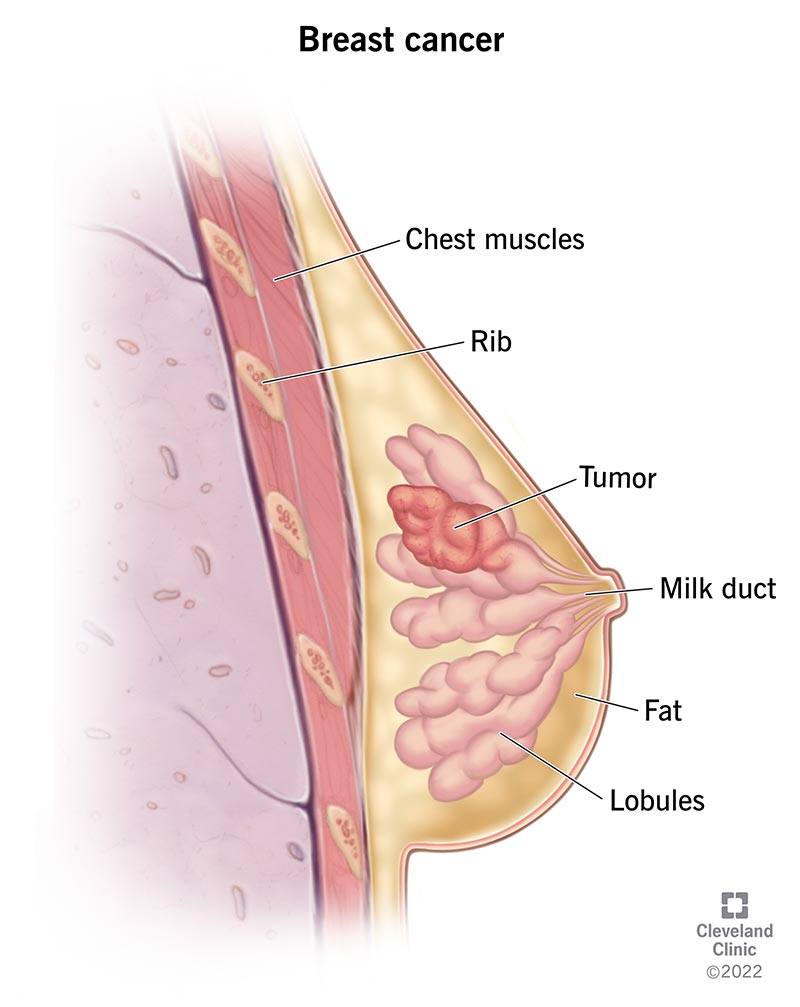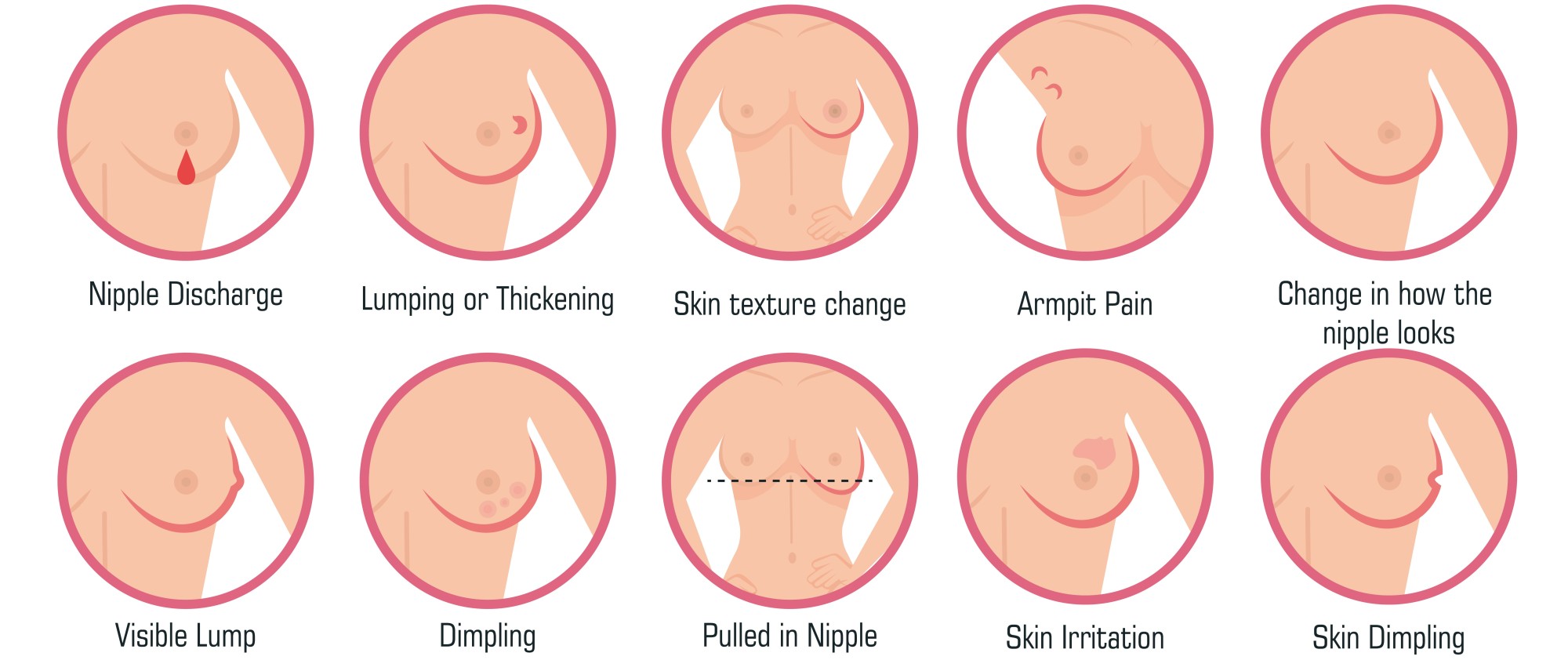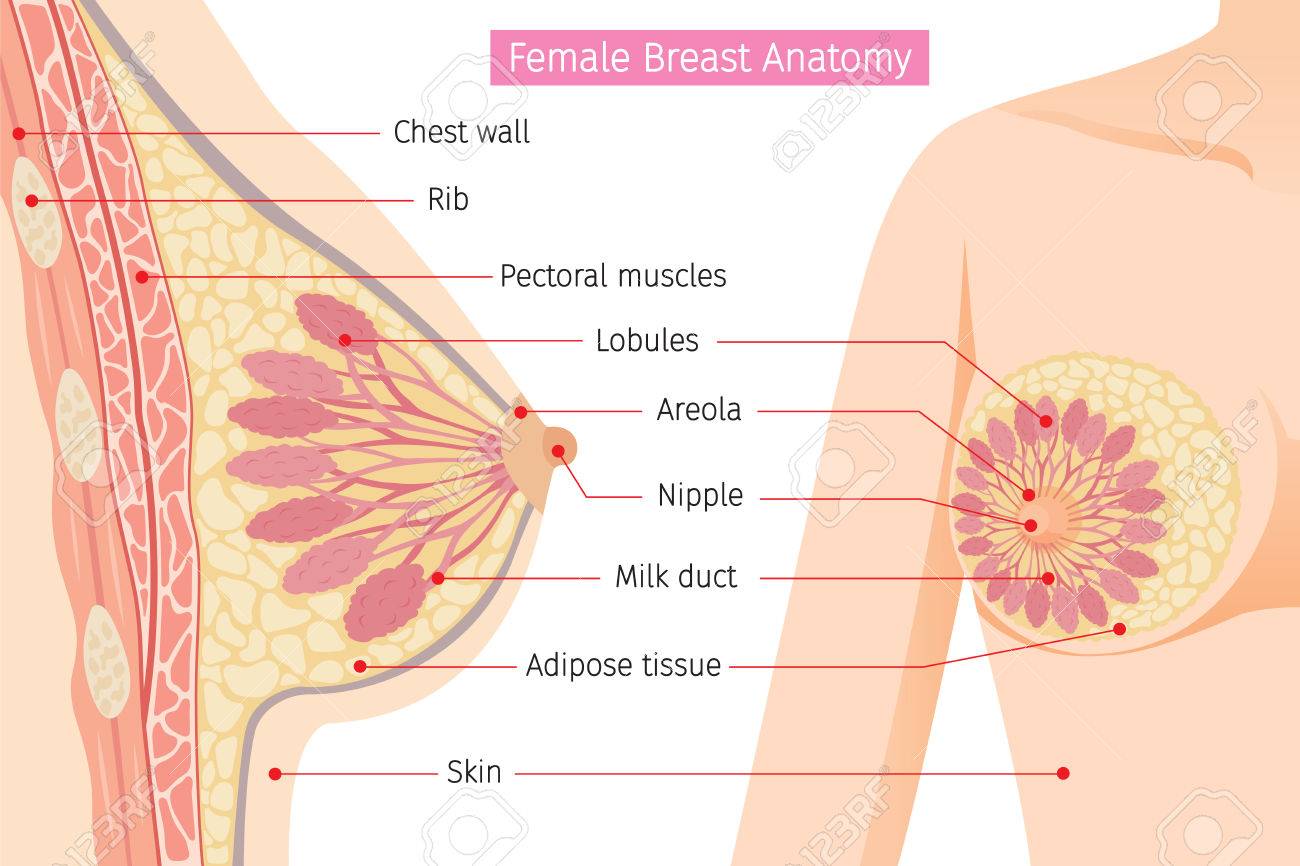It’s distinctive, yeah it’s true. It’s one thing that has fed millions, and has saved millions. It has an impeccable shape. So loved by babies, and more so by adults. Even females take pride in it. Awww, so flawless. 🤣😅😂🤣
Ah, breasts! Who doesn’t like them?!
This is why I’m downhearted to write that our “thing” is under attack. You’d agree we need to fight back for our love.
Breast Cancer: What you should know
Knowing more about your enemy is an important step to defeating them. Let’s get to know breast cancer then, so we can take the fight to cancer!
What is breast cancer?
Breasts are made up of different types of tissue, including glandular tissue like lobes (where breastmilk is produced) and ducts (how breastmilk is carried), fibrous connective tissue, lymph nodes, and fatty tissue.
When breast cells grow abnormally due to a malfunction, they can form a tumor. Not all tumors are cancerous. But if the tumor is malignant—meaning it has potential to grow out of control and spread to other parts of the body—then it’s considered cancer.
Breast cancer is the second most commonly diagnosed cancer in women worldwide. Each year, it’s responsible for more than half a million deaths worldwide.
 |
| Photo by clevelandclinic.org |
Signs and symptoms
Breast cancer caught early is the most treatable kind of breast cancer. Many people don’t have any symptoms of breast cancer when they are diagnosed. However, some warning signs include:
 |
| Photo by oncostem.com |
- A lump in the breast or armpit.
- Breast changes like thickening, swelling, or a change in size or shape.
- Breast or nipple skin changes like irritation, dimpling, or redness or flakiness.
- Nipple changes like a pulling in or discharge (other than breast milk).
- Pain in the nipple or breast.
Self-breast examination
This is where you examine you own breasts once a month to find any abnormalities. The image and video (by Nurse Faryn) below explains the process and what to look out for during the process.
 |
| Photo by havefiness.com |
Who is at risk for breast cancer?
Being female and getting older—two things you have no control over—are the main risk factors for breast cancer. Other things known to increase breast cancer risk include:
- Your medical and reproductive history: Getting your first period early (before 12) or hitting menopause late (after 55), having had breast cancer or a non-cancerous breast disease in the past, previous radiation therapy to the chest, having your first pregnancy after age 30 (or never), and not breastfeeding.
- Your genes and family history: Genetics plays a role, although less than 10% of people who get breast cancer have a family history. Inherited mutations to certain genes like BRCA1 and BRCA2 (which you can be tested for), or a family history of breast or ovarian cancer.
- Your physiology: Having dense breasts, or being overweight or obese after menopause.
- Your lifestyle: Not being physically active, drinking alcohol, and smoking.
- Your job: If it involves being exposed to cancer-causing chemicals, or working nights, which has been shown to affect your hormones in ways that can increase your risk.
The different types of breast cancer.
We tend to think of breast cancer as one disease, but it’s actually a group of diseases. Most breast cancers are carcinomas, which are tumors that grow in the cells that line your body’s organs and tissues. In the case of breast cancer, the most common types are ductal carcinomas (they start in the milk ducts) or lobular carcinomas (they start in the lobes). Rarer types of breast cancer include inflammatory breast cancer (representing about 1-5% of cases) and Paget disease of the breast, which is a ductal cancer that spreads to the nipple and areola (making up approximately 1-3% of cases). The type of cancer, as well as how advanced the disease is, will determine your treatment plan.
Fortunately, mammograms (a type of breast x-ray), can catch breast cancers early, which often leads to successful treatment.
What is a mammogram?
A mammogram is an x-ray of your breasts. Mammograms are used to screen people for breast cancer at regular intervals. Your doctor may also order a mammogram for you if you experience symptoms (for example, you feel a lump).
Types of mammogram
Screening mammogram
This is a routine screening examination of the breast to look for early signs of breast cancer because just us said earlier, early detection is the best defense.
Diagnostic mammogram
This is when a woman is referred by their doctor to get a mammogram because the patient might have some symptoms the doctor wants to have a closer look into.
Below is video that explains mammograms and what to expect during the examination.
Credit: Enterprise Advantage Points Program








0 Comments